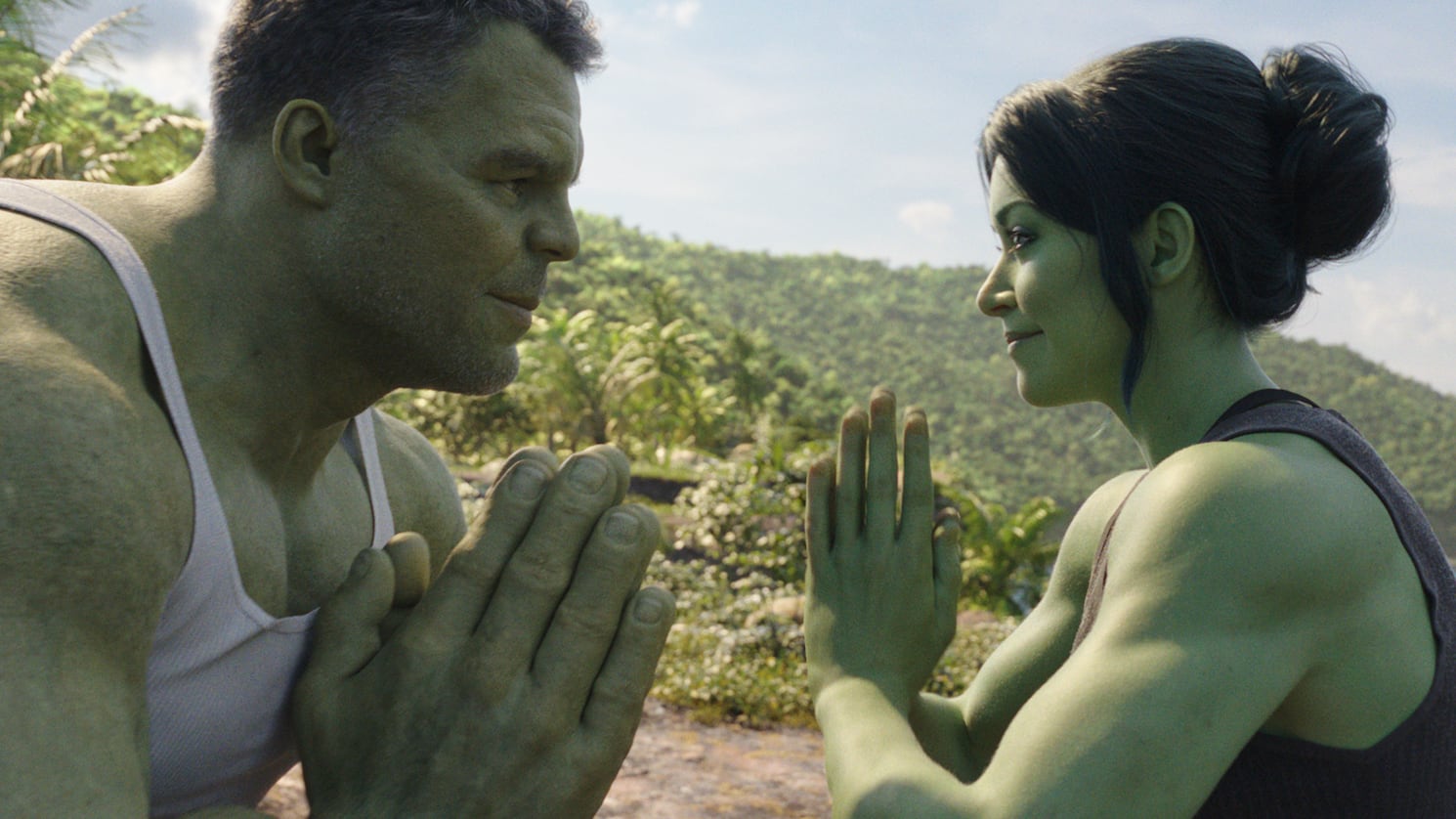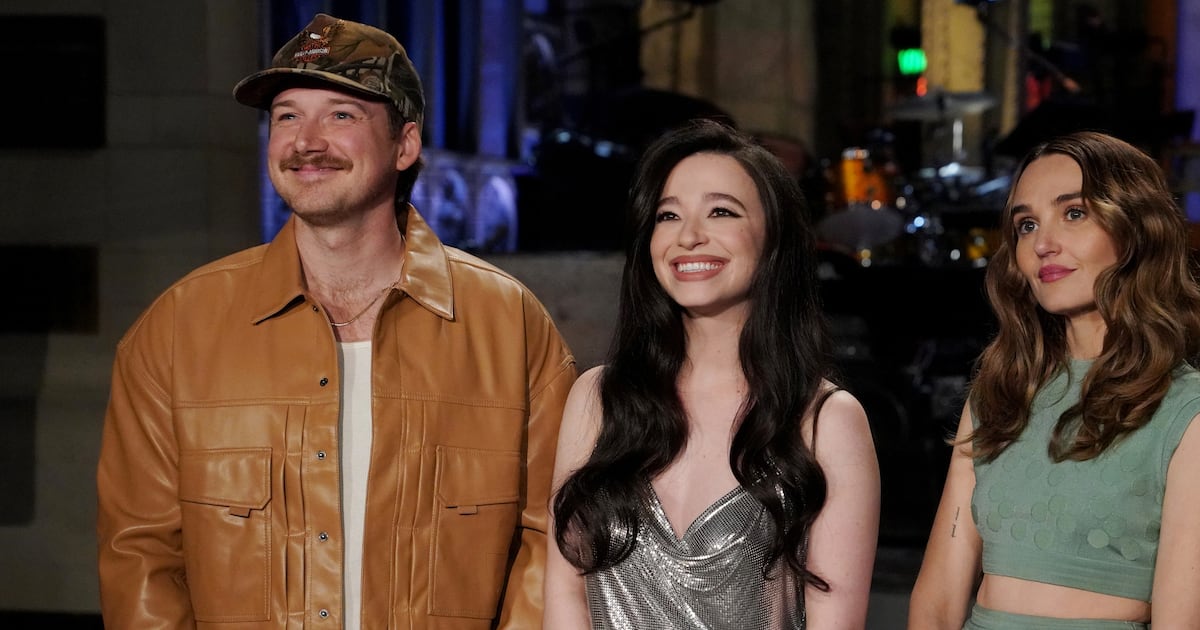Think back to the worst, most haphazardly-made, monetary glue trap you saw that also cost hundreds of millions of dollars to produce. Chances are, you’re landing on something in the Marvel Cinematic Universe. The latest Thor entry was middling; Ms. Marvel squandered a promisingly progressive tale; Eternals was a visually bland superhero link-up; and Black Widow was a confoundingly boring letdown that arrived long after its star hero was already dead.
The MCU has garnered a sour reputation for following the same pattern: films and television shows are announced at flashy conventions, with an increased move toward diversity and stories that will broaden the universe past the thousandth Avengers expansion. Then, all of that is almost always sacrificed for the same rote twists and humor tropes. We should be used to this betrayal by now.
Still, when it was announced that She-Hulk would be the next hero to enter the MCU, there was an inkling of promise. She-Hulk is inherently silly, as is any superhero that has a hyphen in their name. But this wasn’t just to be She-Hulk, oh no. The eighth series from Marvel Studios was properly titled She-Hulk: Attorney at Law, and it would be led by Orphan Black star Tatiana Maslany as Jennifer Walters, the genetically mutated green woman just trying to make it in the cutthroat world of law.
Just by concept alone, this was a chance for Marvel to lean into the campiness that’s always lingering on the fringes of everything they do, an opportunity to actually surprise us with an appropriately cartoonish superhero outing.
That’s why it stings so acutely seeing that, once again, She-Hulk’s potential is entirely wasted.

The show’s premise is undeniably strong, which is proven immediately as the series opens, showing Maslany as Jennifer Walters trying a case in court. Maslany is as watchable as ever in her few human moments before she transforms into her Hulk half when Titania (Jameela Jamil), a Big-Bird-esque supervillain, crashes into the courtroom.
“Do it, do the thing!” Jennifer’s paralegal best friend Ginger begs her. Suddenly, Jennifer is a 6-foot-7 green mutation who can no longer fit into her smart blazer and sensible pumps. She knocks Titania out of the courtroom to the applause of the jury and delivers a smirk-inducing line about being ready to give her closing statements. It’s fun, it’s pretty gloriously stupid, and it’s even kind of exciting. And it’s all downhill from there.
I should be clear here: only the first four of She-Hulk: Attorney at Law’s nine episodes were provided for press. There’s a chance that things could pick up by the time the show rounds out its first season in mid-October. But what I did see only got progressively worse, so much so that I wondered if there was a gas leak in my apartment.
After a dragging but necessary amount of flashback exposition that finds Jennifer and her cousin Bruce Banner (Mark Ruffalo) in Mexico trying to ascertain the level of Jennifer’s newfound powers—Hulkability is apparently a bloodborne genetic disease, who knew!—the show throws her back into the world of Los Angeles law. Except that, after her little courtroom stunt, she’s become a liability to her firm and is cut loose.
Not long after she’s fired, she’s approached to become an attorney for a firm that only defends supervillains. Left with thousands of dollars in law school debt and thrust into the spotlight overnight after news of her Hulk status broke, Jennifer reluctantly agrees to the job.
The superhero law firm could be an intriguing plot device if it were implemented with a more winking, The Incredibles-style self-aware comedy. Instead, it’s the show’s first major mistake. The firm acts as the series’ catalyst for endless obnoxious cameo appearances by a slew of forgotten or never-before-seen villains from Marvel’s past. As the series goes on, it feels more and more like Jennifer Walters is being used as a stiff prop for the villains to act around. Their boring B-plots supersede She-Hulk—the one whose name is on the title card!
At one point, Jennifer attempts to call attention to that, using another one of the show’s glaring mistakes: fourth wall-breaking asides. “I hope you don’t think this is one of those cameo-a-week type of shows,” she says to the camera in the third episode. “Just remember whose show this really is.” Honestly, I was starting to lose track.
These wannabe-Fleabag fourth wall breaks were already a risk given the fact that Phoebe Waller-Bridge’s masterpiece still remains so prevalent in cultural memory, so why the writers then decided to make it so bafflingly inconsistent is far beyond my comprehension—especially when they were so integral in the show’s initial marketing and the original comics’ appeal.

If you’re going to break the fourth wall in a television show, you’ve really got to commit to it. There should be a reason that it’s employed, a punchline thrown in here or a serving of exposition doled out by the main character there. In She-Hulk, those things come sparingly and randomly. Spots where a humorous aside could be helpful in propelling the show’s plodding pace along are ignored in favor of having Maslany break the fourth wall in moments that are so glaringly on the nose that several of them made me groan out loud.
In what could’ve been a genuinely funny sequence in the fourth episode, Jennifer goes on a series of bad dates in Hulk form after changing the picture on her dating profile to her green alter ego for a little male attention. After an already-lazy joke about men skipping out on the tab, She-Hulk turns to the camera, lifts a glass of white wine to her computer-generated mouth, and says, “Is there anything worse than dating in your 30s?”
The moment nearly made me Hulk out and throw my television through the window. It’s bold of a show to think it’s this witty without ever landing a single punchline. She-Hulk is filled with these kinds of indolent jokes, plucked from the ashes of the Greta Gerwig-starring, abandoned How I Met Your Dad spinoff from 2014.
Instead of spending time trying to punch-up its comedy, She-Hulk: Attorney at Law is laser-focused on hammering us over the head with a rote take on the difficulties of being a woman in the world, one that unfortunately boils down to the nothingburger of “Men Are Bad.”
It’s too bad the show has absolutely nothing new to say about the intrinsic evils of masculinity and chauvinism that haven’t been said before hundreds of times in more interesting and involved programming. She-Hulk is not only a disservice to art that explores these things in more transgressive, thoughtful ways, but an insult to its viewers who are more than capable of digesting cultural criticism with a little nuance.
In fact, She-Hulk is irrefutable proof that Marvel doesn’t have a single iota of faith in its viewers. This was another opportunity to throw the rule book out the window—or, hell, at least put it in a drawer for a few hours—and make something truly unique and really, actually funny. And, no, I don’t mean with in-universe quips and useless cameos in place of punchlines. I mean with jokes. You know, the thing that television comedies are supposed to be filled with.

Then there's She-Hulk’s abysmal CGI. After an onslaught of VFX artists came forward about the poor working conditions at Marvel, Tatiana Maslany defended the show’s visual effects team, saying, “I watch it and it doesn’t feel like a cutscene from a video game.” Not a great bar, there.
Surely, the pressure to get She-Hulk’s complex level of CGI finished in time for deadlines that have millions of dollars tied up in them is a nightmare, and you can see the rush job playing out across every episode. I found myself thankful that the show is airing weekly. Maybe that will give the effects team more time to show the magic that they’re capable of because, as of now, She-Hulk looks like an ungodly abomination of science that not even Mary Shelley could love.
It’s disheartening to watch something that should play out like a delightfully bad ’80s cartoon squander every last bit of its promise once more in favor of falling back on a hemorrhaging formula. This is Marvel’s latest in a run of grand, ultimately useless tricks to distract from a complete and utter lack of imagination.
But perhaps the most criminal offense of all in this law procedural—and I use that genre phrasing extremely lightly here—is the grave misuse of Tatiana Maslany. If there’s one silver lining in her casting, it’s that She-Hulk: Attorney at Law has paid her enough to be able to take her time looking for a role deserving of her talent. After an undeniable star turn as no less than 14 different clones during the run of Orphan Black, which earned her three Emmy nominations and one win, it’s shocking that this is what she’s given to work with in the “Big Leagues.”
I could feel Maslany trying her best to get every laugh, to charm her way through the most confusing, bland scripts and CG constraints. But even the best actresses can’t will their way out of dreadful material. They’re then forced to hope that, at the very least, the final product will be so bad it’s campy. And while there’s maybe a shred of novelty to be found here watching just for laughs with your friends after three margaritas, you’re better off wasting half an hour on something that will at least be memorably bad when the hangover wears off.
Keep obsessing! Follow the Daily Beast’s Obsessed on Facebook, Twitter, Instagram and TikTok.






